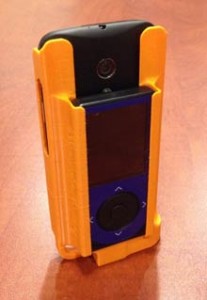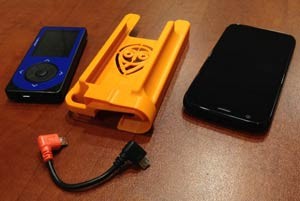If you or a loved one have Type 1 diabetes, then you know how important it is to closely monitor glucose levels. In America, there may be as many as 3 million people who’ve been diagnosed with Type 1 diabetes. These people have to carefully balance their insulin doses by way of multiple injections or continuous infusion from a pump.
Katherin Tokarski has a 10 year-old son who was born with Type 1 diabetes, and their family monitors his glucose levels using a monitoring system called the Dexcom G4. The advantage of this device is that it communicates Reilly’s medical status via computers and mobile devices, so that Katherine can always have remote access to his blood sugar levels at all times.

R&D Technologies then went through the prototyping process. After printing the file, the firm found out that it would need modifications in order to fit her son’s Dexcom and mobile phone. As a result, engineers from R&D Technologies asked Katherine and her son to bring in the Dexcom and phone for measurements, modified the CAD model and printed it in ABSPlus using a Stratasys Fortus 250mc 3D printer. Orange being Reilly’s favorite color, the ten-year-old requested that it be printed in orange. Not only was the color right, but the 3D printed device was durable enough to weather the wear and tear that comes with belonging to an energetic 10-year old, and the engineers were able to test out different custom designs inexpensively.

Even if Katherine’s son does break the one-of-a-kind connector device, the Tokarski family is a little more at ease knowing it can easily be replicated and ordered again, without having to go through the same hassles. To this point, Reilly said, ““Repeatability is also important in my opinion in that we are taking about a 10 year-old boy. I have one at home too, and one of the things that 10 year-old boys do best is destroy things. Should he accidently break the case, we can have one reprinted and overnighted to his home. Fortunately, because of the robust quality of Stratasys ABSPlus, and our selection of the proper build orientation, our expectation is that this need will be unlikely.”
Medical applications of 3D printing technology are the industry’s pride and joy, and its most significant humanitarian application. The customizable nature and design flexibility that CAD software and 3D printing provide are certain to facilitate more practical medical applications that will have an impact on the quality of people’s lives.



